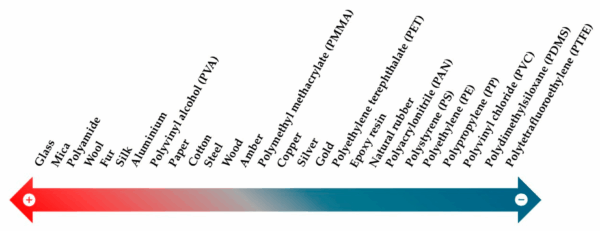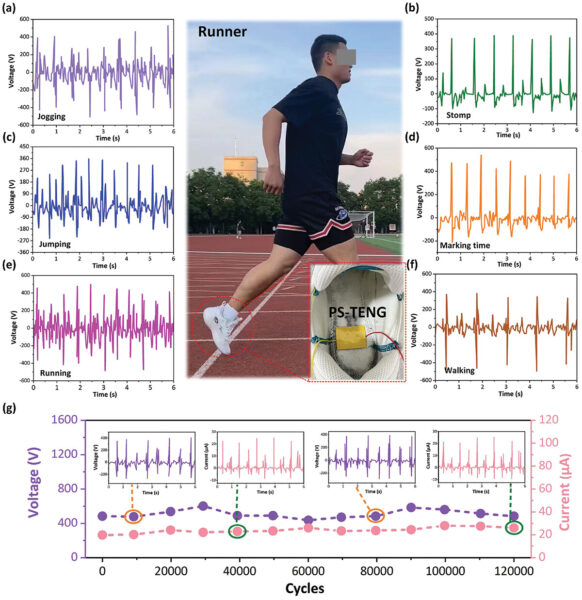PFAS-Free Triboelectric Nanogenerators for Sports Wearables

Sports wearables often use triboelectric nanogenerators (TENGs), and recent advances allow them to become PFAS-free.
TENGs convert mechanical energy from physical activity, such as running, jumping, or swinging, into electricity. This makes them a valuable, low-carbon alternative to batteries or supercapacitors in specific applications and eliminates the need for recharging. One such application is sports wearables. These wearables, which include gyroscopes, accelerometers, and magnetometers, can provide information for sports analytics. Wearable electronics are in increasing demand and can provide insights into an athlete’s health and performance to foster practical training.
You can also read: MXene Hydrogels: A Plastics Industry Breakthrough
TENGs commonly comprise polytetrafluoroethylene (PTFE), polyvinylidene fluoride (PVDE), polyamide, and aluminum. These devices function by using triboelectricity, which involves the interaction between a material prone to giving electrons and one prone to accepting them. These interactions can occur via contact separation, lateral sliding, and freestanding. Manufacturers must choose viable materials based on the triboelectric series to use the triboelectric effect.

By employing alternative materials, manufacturers can avoid using PFAS in TENGs. Figure courtesy of Towards Perfluoroalkyl and Polyfluoroalkyl Substance (PFAS)-Free Energy Harvesting: Recent Advances in Triboelectric Nanogenerators for Sports Applications.
Why Are PFAS Used, and What Are Alternatives?
Generally, TENGs utilizing PFAS exhibit higher electrical outputs than PFAS-free alternatives, possibly because they rank higher in the triboelectric series. Fortunately, surface modifications and material doping techniques may provide a workaround. Modifying natural polymers or non-PFAS synthetics, like polydimethylsiloxane, may make achieving comparable electric output possible. MXenes offer another alternative. The surface functional groups of these materials exhibit tunable electronic properties. In fact, past research has demonstrated that certain MXenes can show greater triboelectric negativity than PTFE.
From Labs to Wearables
There is still room for research and development to ensure that PFAS-free TENGs perform as well as those using PFAS. Nevertheless, already, researchers have developed several PFAS-free TENGs. For example, in a 2021 study, researchers developed a single-electrode triboelectric yarn. The yarn comprised a Tencel/chitosan blended yarn combined with a silver-coated polyamide conductive yarn. Using this yarn and a cotton warp, researchers created a woven structure. This material was able to monitor finger gestures and body movements with high accuracy. In a 2023 study, researchers developed a TENG using PDMS doped with silanized graphite oxide (tribonegative) and nylon (tribopositive). The device, when inserted into a shoe, monitored jogging, long jumps, and walking. The intended application of this device was to provide insight into running mechanics and posture. With insights such as these, athletes can monitor and improve performance as well as reduce the risk of injury.

Sports wearables can provide athletes valuable health insights, and using PFAS-free materials can increase their commercial viability. Figure courtesy of The triboelectric sensor based on PDMS/SGO for human running posture and physical fitness health monitoring.
As new materials and technologies emerge, PFAS-free TENGs have the potential to match or outperform those that use PFAS. Regulations targeting PFAS may affect the commercial viability of TENGs manufactured from materials such as PTFE and PVDE. Research into sustainable alternatives will ensure that athletes can continue making use of these valuable devices.
